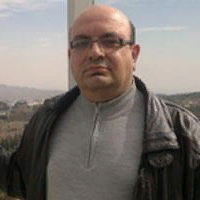
Seyed Amirhassan Monadjemmi
Work place: University of Isfahan, Faculty of Computer Engineering, Department of Artificial Intelligence, Isfahan, 81744, Iran
E-mail: amonadjemi@yahoo.co.uk
Website:
Research Interests: Image Processing, Intrusion Detection System, Computer Networks, Pattern Recognition, Neural Networks, Artificial Intelligence
Biography
S. Amirhassan Monadjemi Amirhassan Monadjemi, was born 1968, in Isfahan, Iran. He got his PhD in computer engineering, pattern recognition and image processing, from University of Bristol, Bristol, England, in 2004. He is now working as an associate professor at the Department of Computer Engineering, University of Isfahan, Isfahan, Iran. His research interests include pattern recognition, image processing, artificial neural networks, and physical detection and elimination of viruses.
Author Articles
An Automatic Video-based Drowning Detection System for Swimming Pools Using Active Contours
By Nasrin Salehi Maryam Keyvanara Seyed Amirhassan Monadjemmi
DOI: https://doi.org/10.5815/ijigsp.2016.08.01, Pub. Date: 8 Aug. 2016
Safety in swimming pools is a crucial issue. In this paper, a real time drowning detection method based on HSV color space analysis is presented which uses prior knowledge of the video sequences to set the best values for the color channels. Our method uses a HSV thresholding mechanism along with Contour detection to detect the region of interest in each frame of video sequences. The presented software can detect drowning person in indoor swimming pools and sends an alarm to the lifeguard rescues if the previously detected person is missing for a specific amount of time. The presented algorithm for this system is tested on several video sequences recorded in swimming pools in real conditions and the results are of high accuracy with a high capability of tracking individuals in real time. According to the evaluation results, the number of false alarms generated by the system is minimal and the maximum alarm delay reported by the system is 2.6 sec which can relatively be reliable compared to the acceptable time for rescue and resuscitation.
[...] Read more.Other Articles
Subscribe to receive issue release notifications and newsletters from MECS Press journals